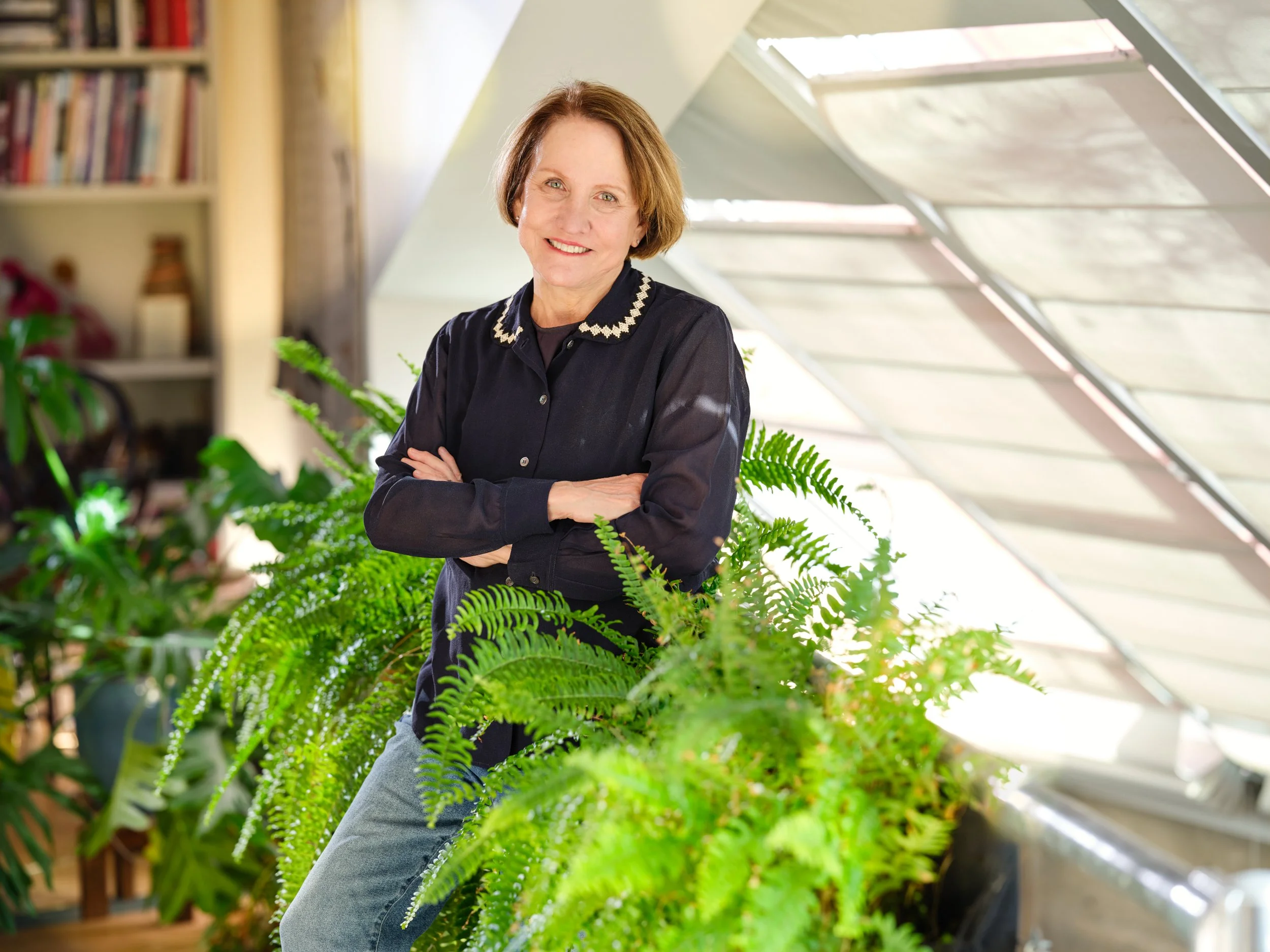Joyce Melander is an artist fascinated by the constructed object. Using a variety of processes such as weaving, crochet, embroidery and sewing, the artist’s intricately assembled sculptures carry traditional craft methods into the context of fine art.
She incorporates a wide array of materials in her work, combining wool, glass beads, textiles, and wood veneers into a rich, almost musical interplay of texture and rhythm.
She lives and works in Santa Fe, New Mexico, a place whose desert landscape and crisp, bright colors inspire the artist’s vividly hued palette and organic shapes. Melander brings this inspiration into the studio not to duplicate the outside world, but rather to synthesize her surroundings and observations into something entirely new, without literal references.
A lifelong pianist, Melander plays daily, incorporating musical terms into many of her titles: Rondo, Allegro Non Troppo, Glissando. Her elaborately patterned, delicately worked sculptures, often arranged in lilting, organic configurations, recall Kandinsky's musical abstractions. Kandinsky's fascination with the “sound of color” established the artist as a pioneer of Western abstraction. Melander’s approach is a more postmodern one, preoccupied with artisanal process, material opulence, and extravagant construction.
Born in 1959 in Virginia, the artist grew up overseas. Her father worked for the government and moved his family to posts in Taiwan, Turkey, Okinawa, and the Philippines. Returning with her family to Minnesota, Melander-Dayton studied art history and fine art at the University of Minnesota. She began her career as a painter, working in a highly realistic style, making non-traditional still lifes in two-dimensions. While rendering them with almost photographic verisimilitude, the artist would undercut their representational quality by isolating them against flat, brushed surfaces. This displacement lent the objects themselves an abstraction and a concentrated attention on their formal qualities.
Melander ultimately fully embraced this concentration on form itself, moving beyond the two-dimensional plane and expanding her arsenal of materials to include fiber, beads, and exotic woods. “I had always looked at the back of my canvases and thought they were beautiful textiles,” she says. “I just stitched through the canvas and realized it was a warp afterwards. Then I realized I wasn’t confined like on a loom. I could make the work go any which way I wanted.”
Weaving and beadwork became dominant forces in her work, an opportunity to balance the painterly with the sculptural. As she describes it, the break from realism became “a vehicle for really working with color and different textures.” She describes her work as anti-digital and celebrates the handmade, paying tribute to the practiced delicacy and dedication her handiwork requires.
Her work is held in prestigious public collections throughout the country, including the Tennessee State Museum, Nashville; Cargill Corporation, Minneapolis; Weyco Group, Wisconsin; and Florsheim Inc., among others. Selected exhibitions in numerous galleries and institutions include Salon de Mars, Paris, France; New Mexico Museum of Art, Santa Fe; Groveland Gallery, Minneapolis; Galleria Il Saggitario, Messina, Italy; Allene Lapides Gallery, Santa Fe; Neville-Sargent Gallery, Chicago; LKF The Gallery, Hong Kong; and Contemporary Gallery, Modena, Italy.
Several important writers and critics of our time, including Ann Landi, Peter Frank, and Edward Rubin, have penned essays and articles.
Melander is currently represented by June Kelly Gallery in New York.
